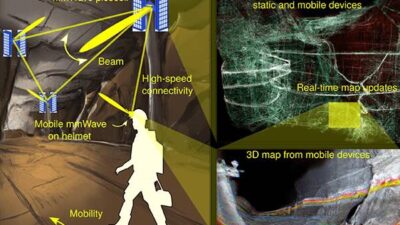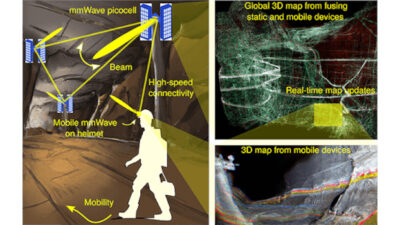Inductive proximity sensors have a set of standard behaviors. Understanding these behaviors enhances implementation while avoiding pitfalls typically associated with these sensors.Inductive proximity sensors generate a magnetic field from their detection faces. Whenever a detectable object moves into the sensor's field of detection, Eddy currents build up in the target and dampen the sens...
Inductive proximity sensors have a set of standard behaviors. Understanding these behaviors enhances implementation while avoiding pitfalls typically associated with these sensors.
Inductive proximity sensors generate a magnetic field from their detection faces. Whenever a detectable object moves into the sensor’s field of detection, Eddy currents build up in the target and dampen the sensor’s magnetic field. This effect triggers the sensor’s output. Since a current in the target is needed for detection, inductive proximity sensors are uniquely suited for detection of all types of metals.
These sensors come in two forms, shielded and unshielded. A shielded inductive proximity sensor can be embedded flush in its mounting material without affecting the sensor’s field of detection. The unshielded inductive proximity sensor has the advantage of longer sensing distances, but the disadvantage of not being embeddable.
A standard 30mm diameter inductive proximity sensor has a10mm sensing distance. The above chart shows thereduction in sensing distance due to different types of materials
Understand sensing distance
When an inductive proximity sensor is rated for sensing distance, the rating refers to the sensor’s ability to detect the ‘standard detectable object’ at its specified sensing distance. The ‘standard detectable object’ is a 1-mm thick, square piece of ferrous metal, with the side of the square equal to the diameter of the proximity sensor’s face.
If the target material is not ferrous, the effective sensing distance of the sensor will be different. Here are a few examples of the reduction in sensing distance due to target material. Copper is 30% of the effective sensing distance, aluminum is 40%, brass is 50%, and stainless steel is 80%.
Other factors that can account for reduced sensing distances are the target material’s capacity for conductance. Conductive materials disperse the Eddy currents that are required for inductive sensing. Highly conductive materials make poor detectable objects and create reduced sensing distances. On the other hand, thin materials, for example aluminum foil, hold the Eddy currents and make excellent targets for inductive sensing.
Lastly, make sure that the specified power requirements are met. Reduced line voltages can lead to weak magnetic fields from the sensor’s detection face and smaller sensing distances.
Output chatter
Inductive proximity sensors are designed to have a type of hysteresis in their circuitry that is used to eliminate output chattering. As a target approaches the sensor’s detection face, it eventually triggers a sensor output. When the target moves away from the sensor’s detection face, the triggered output holds until a certain distance has been passed.
This distance, called the ‘reset distance’ or ‘distance differential,’ can be as high as 10% of the sensor’s total sensing distance. This holds proportionally true for detection objects that cause reduced sensing distances. Make sure that the target object is completely removed beyond the sensor’s reset distance to avoid all potential chattering from detectable object vibrations or other environmental factors.
When using a multitude of inductive proximity sensors in an application, be aware of an effect called mutual interference. This occurs when one proximity sensor’s magnetic field effects another sensor’s magnetic field causing it to trigger an output. This false triggering can be erratic and difficult to detect.
Look for inductive proximity sensors that feature alternate frequency models. These alternate frequency sensors oscillate their magnetic fields in different frequencies and do not interfere with one another as much as two inductive proximity sensors with the same frequency. Simply take one frequency proximity sensor and mount it next to one of a different frequency.
Inductive proximity sensors are a simple and effective sensing tool. Avoid application problems by planned implementations, and your applications will be a success.
For more information, visit www.info.omron.com
Author Information
Guerrino Suffi, proximity sensors product marketing specialist, Omron Electronics Inc. (Schaumburg, Ill.).



